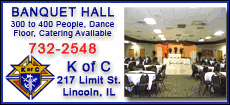| ||||||||||
| ||||||||||
The flames had jumped from the ground to the treetops, what is called a "crown fire." The conflagration was creating its own weather. What appeared to be little dust devils were swirling everywhere. Clary, 41, looked on in rapt fascination as wood chips spun into the air and ignited. Inmate Christopher Buttner, 37, saw the flames leap over the top of the chow hall from both sides and meet overhead, their color changing from a wild yellow to a ravenous red. Their safety zone had become an oven. The building started to fill with thick, acrid smoke. Then the flames began erupting from beneath the eaves. By now, Buttner was certain the fire had consumed most of the oxygen outside the building. Some people lay down on the floor to get below the smoke, while others began shaking open their emergency rescue shelters. Made of a reflective material, these emergency tents are a last resort when a position is about to be overrun. Some firefighters ghoulishly refer to the bags as "the foil shake and bake." Navarro, 28, who had only been at the camp for two months, began to wonder if they would make it. It looked like hell outside. He began to pray.
With their captain absent, Crew 5 Foreman Kevin Taylor assumed command. He headed for the door. "Get ready to leave," he shouted. "I'm going to get the crew carrier." Miraculously, the fire began to lift slightly. Another foreman, Andrew Cardullo, lined the men up and began marching them outside single file, their shelters tucked under their arms. Just as the last inmate went through the door, the roof collapsed. When no one could raise Hall and Quinones, the decision was made to drive around the camp and search for them. When that failed, the crews looked for a safe spot to wait out the firestorm. They found a place toward the back of the camp that had no buildings and had already been burned over. They parked and waited for the smoke to clear. Searchers later found Hall's vehicle in a canyon 800 feet below the camp. The men had apparently driven off the road in a lefthand curve and plunged over the side. The inmates would not say whether it appeared the crash or the fire had killed the men. They also refused to divulge Hall's last transmission, citing the ongoing investigation. That night, the inmates were taken to the Prado camp in Chino. During the drive, they reflected on the two who were lost. Clary had worked under Hall and Quinones for two years. Everything he knows about fires and fighting them, he owes to them. Now, he believes, he owes them his life. Buttner was angry. He couldn't help thinking that if they had been allowed to stay on the fire lines, none of this would have happened. When the fire was over, all that remained of Camp 16 was the visitors' bathroom. Although the Station Fire is the largest in Los Angeles County history, Hall and Quinones are the only fatalities. Hall left behind a wife and two grown sons; Quinones' wife, Loressa, is about to deliver their first child. At the Chino camp, the prisoners and their keepers talked about their fallen leaders and prayed for their families. Then they did something that guards and inmates don't normally do
-- they hugged. Four days later, they were back on the fire lines.

[Associated
Press;
Copyright 2009 The Associated Press. All rights reserved. This material may not be published, broadcast, rewritten or redistributed.

News | Sports | Business | Rural Review | Teaching & Learning | Home and Family | Tourism | Obituaries
Community |
Perspectives
|
Law & Courts |
Leisure Time
|
Spiritual Life |
Health & Fitness |
Teen Scene
Calendar
|
Letters to the Editor